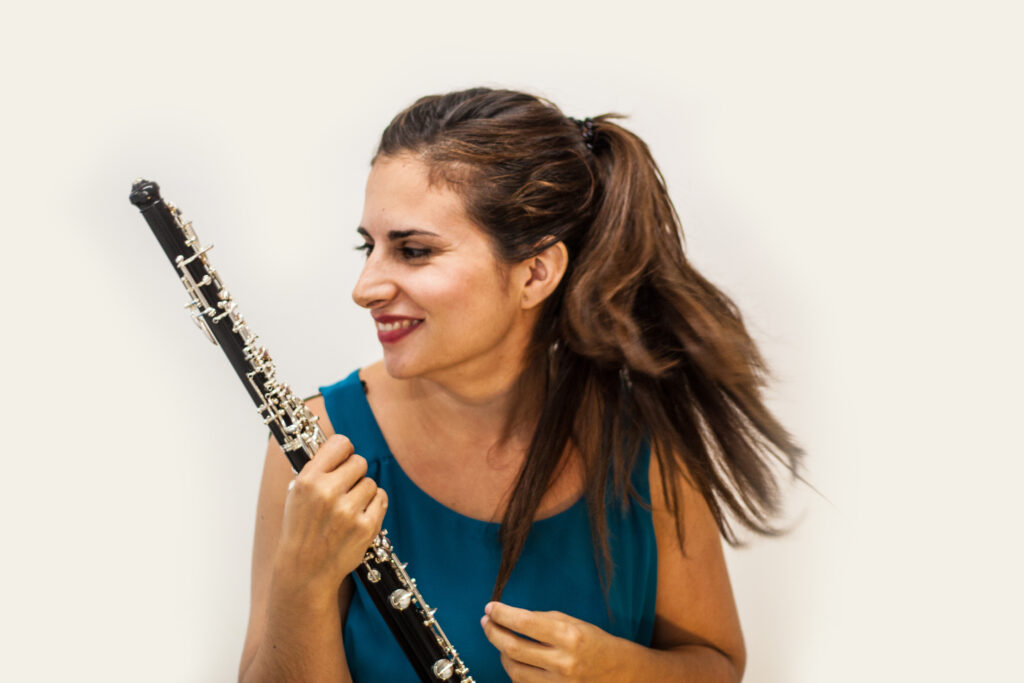Hi everyone! Welcome one more day to the MusicBayside Oboe Blog. I’m Nuria Cabezas and today I’ve prepared a post in which you can learn how to form the embouchure for playing the oboe! What it is, what it is for, its technique and study, as well as graphic examples.
What is the embouchure and what is it for?
We can define the embouchure as the position adopted by the lips and the muscles of the mouth to hold the reed. A correct embouchure will allow the air coming from our lungs get into the instrument through the vibration of the double reed.
We could say that the embouchure is the link between us and the instrument.
Technique and steps for doing a proper embouchure
The biggest difficulty we face when studying the embouchure is to understand the abstract concepts with which it is usually explained. To understand the process in detail we will see the steps to follow during the study and some graphic examples.
Now we are going to see how to form the embouchure following 4 steps:
Step 1 – We place the reed, resting it on the lower lip.
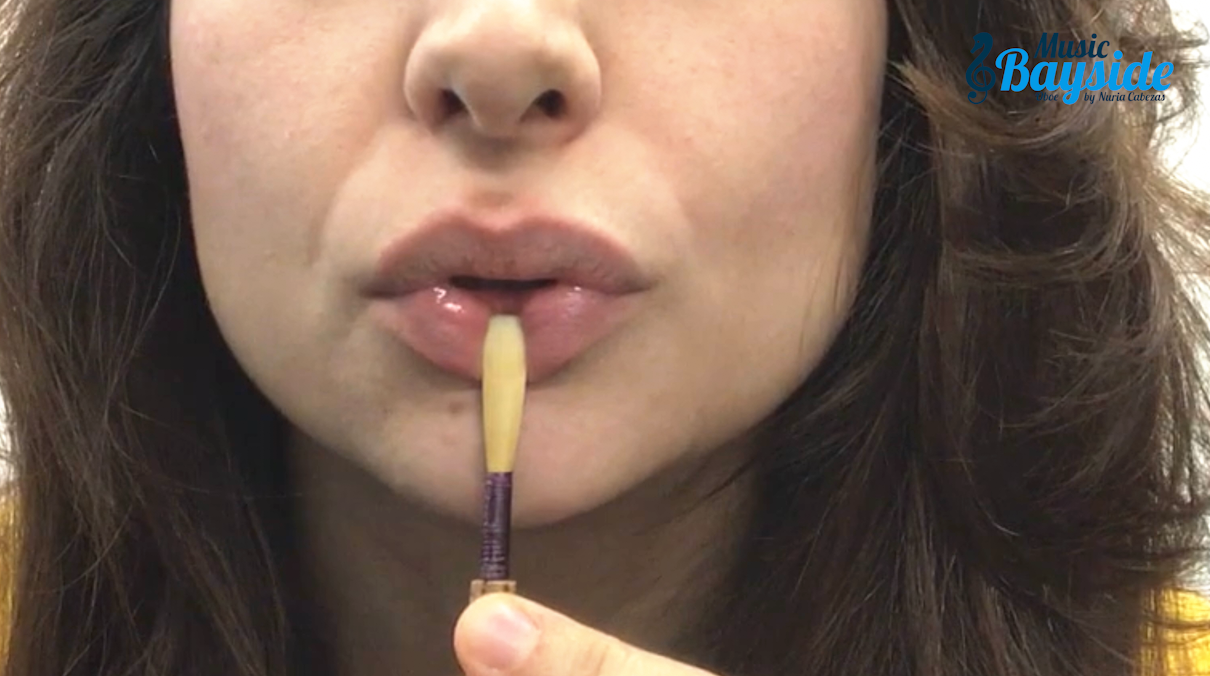
Step 2 – The corners of the lips move towards the center, rounding the embouchure. It can help us to think that we pronounce the letter “U” in this second step.
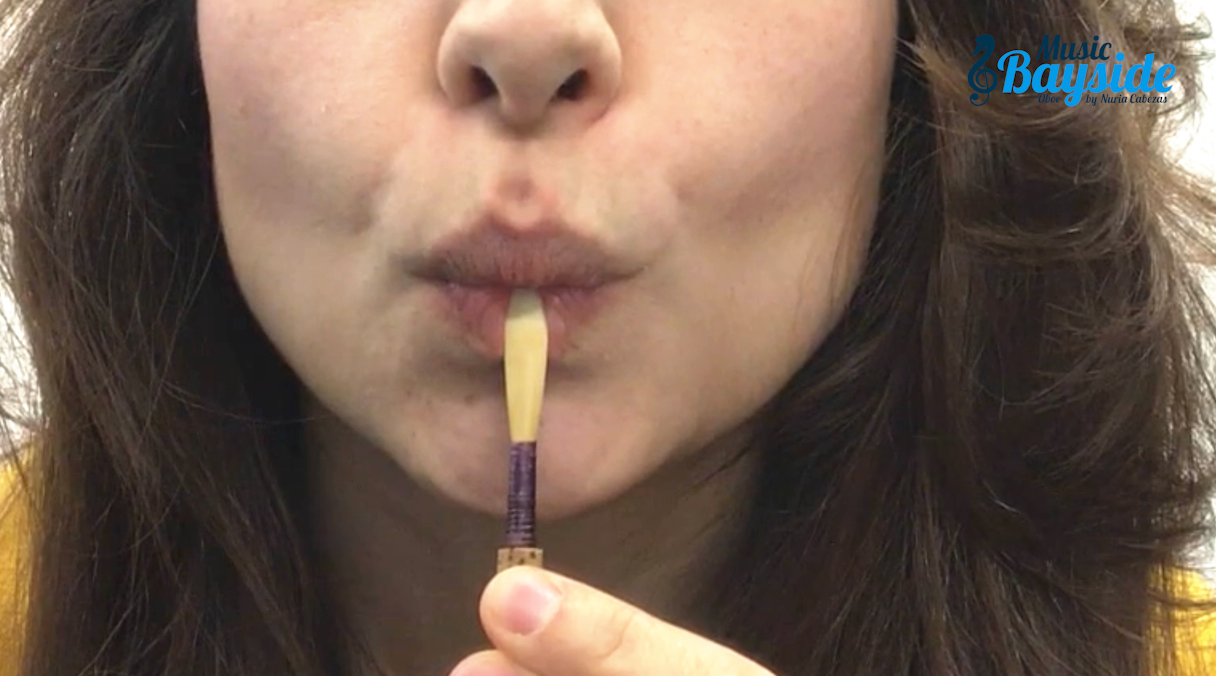
Step 3 – Relax the lower jaw as when pronouncing the letter “O”. This allows the space within the oral cavity to expand and the teeth to be separated.
We will take air in this step, always by the mouth when performing these exercises.
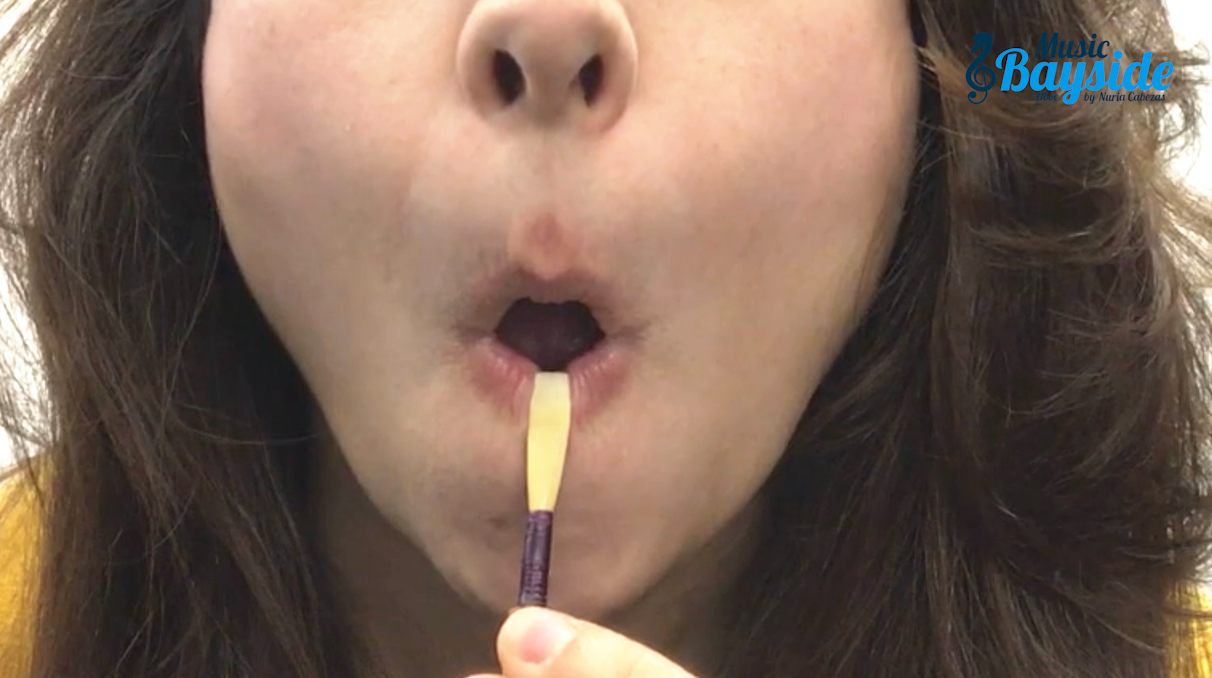
Step 4 – We cover the teeth with our lips, above and below the reed, leaving only the tip of the reed inside the mouth, around 2 mm.
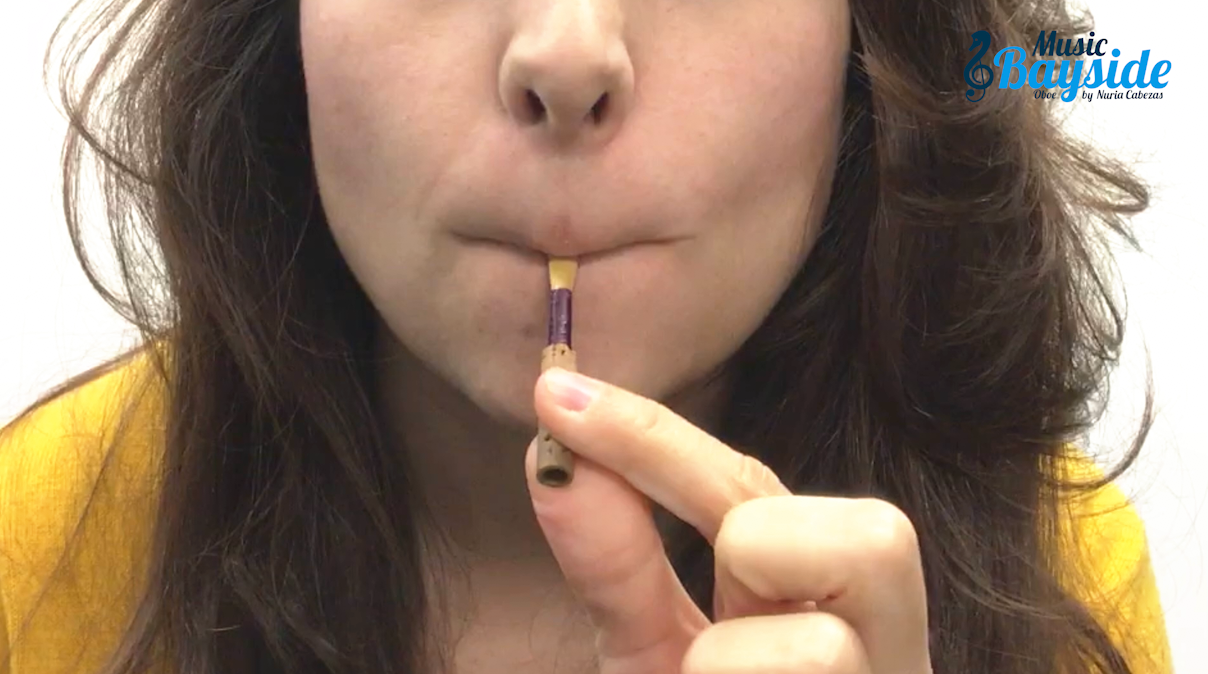
Graphic examples
Next we will see some daily examples that help us to understand the process better.
Example 1 – It will help us to think about the feeling we have when we have eaten something that burns us a lot but that we can not get out of our mouths. What we do unconsciously is to enlarge the oral cavity by raising the palate and lowering the tongue. That position of the mouth inside is what we need in order to play.
Example 2 – Another example could be when we yawn trying to keep our mouth closed. When it happens to you, notice what happens inside your mouth!
Example 3 – As last graphic example we will see the position of the mouth when we whistle. The jaw drops and the lips are rounded, bringing the ends to the center. It is basically the same position.
Advice for your study
TIP Nº1:
First, make the embouchure on the thread of the reed and blow. Then make it on the tip of the reed and make it sound.
Finally, with the reed and the instrument we will play a note of the middle register.
It will help us if we do the exercises in front of a mirror. In this way we will associate the visual image with the sensations that we acquire in the musculature of the mouth.
TIP Nº2:
Another tip to keep in mind is that the reed and the oboe come to us. We shouldn’t go to look for the reed. This way we will avoid tensions in the cervical area and in the back. Think about the idea of a vertical line that goes from the head to the feet and be aware of it.
TIP Nº3:
Attention! The reed and the instrument must form an angle of approximately 45º with our body. The fact that the oboe reed is double indicates that both sides of it must vibrate equally. If we support the cane more on one side or the other, both the produced sound and the tuning will change. That’s because the reed is getting closed and then less air will pass through it. This is what we call biting the reed.
Last but not least, I’d like to add that a good embouchure should be relaxed and flexible to cover the different registers of the instrument. More relaxed for the low register and less for the high one. But without biting the reed at any time.
If you want to learn more exercises to do with the reed alone and improve your intonation, you can find them in the video DIY Simulator for oboe and reed exercises by clicking here: https://youtu.be/sXvS1t7lAi4
That was all for today!
Good luck with your embouchure, hope this blog post will help you! Don’t forget to share it and thumbs up if you like!
And also you can subscribe to my Youtube channel to get the notifications about the new videos, there will be a new video every week!
www.youtube.com/musicbaysideoboe
Check out the full video about the embouchure in the oboe 🙂



